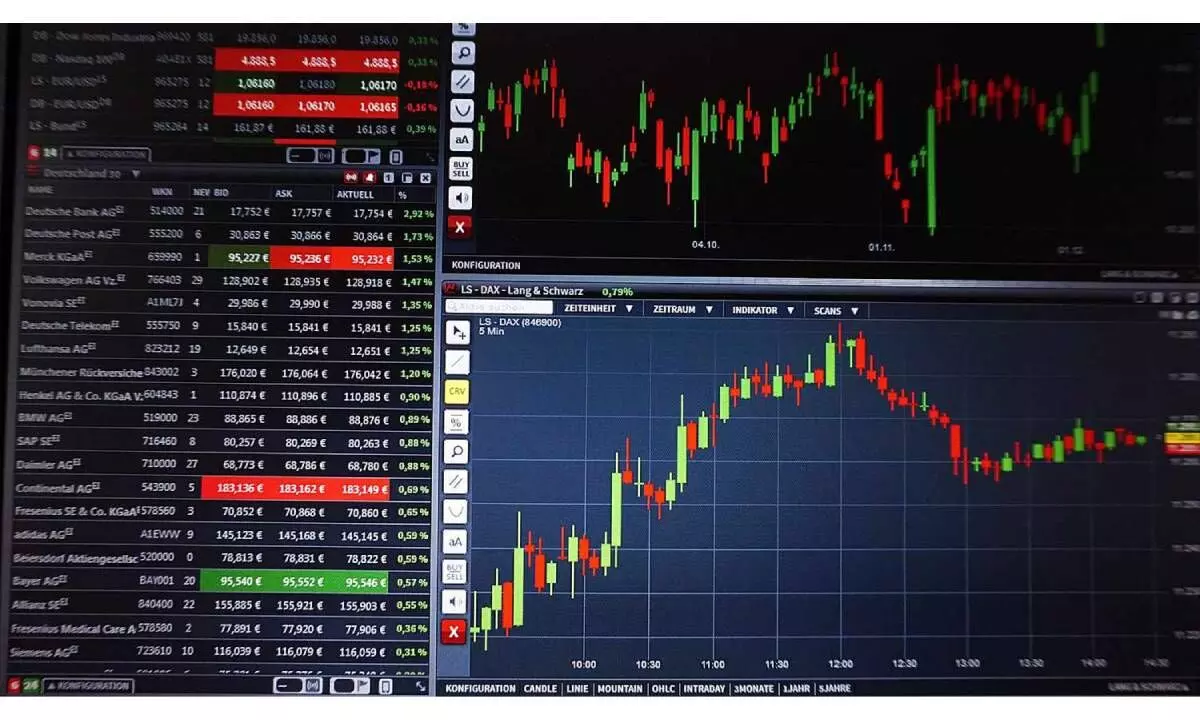How to calculate risk using Gamma?
By understanding Gamma, traders can better manage their risk and avoid taking on more risk than they are comfortable with
image for illustrative purpose

An efficient trader defines his risk even before he takes up a trade. He has a proper understanding of risk reward ratio. Suppose a trader has a capital of Rs23 lakh. Margin required for each Nifty Futures is approximately Rs1,22,000. So, considering the margin required, the trader may decide to hold 5 Nifty Futures contracts to limit his risk. Now, let’s see how to calculate risk, while trading options and will the same logic work in trading options. Let’s figure out if it is the right way to think about risk while trading options.
Let us consider an example.
Number of lots traded = 10 lots (Note – 10 lots of ATM contracts with a Delta of 0.5 each is equivalent to 5 Futures contract)
• Option = 19450 CE
• Spot = 19436
• Delta = 0.5
• Gamma = 0.005
• Position = Short
Assume the trader has short 10 lots of Nifty 19,450 Call Option; this means the trader is within his risk boundary. Now, we know that Delta can be summed up. We can essentially add up the Deltas to get the overall Delta of the position. Also, each Delta of 1 represents 1 lot of the underlying. So keeping this in perspective, and we can figure out the overall position’s Delta.
• Delta = 0.5
• Number of lots = 10
• Position Delta = 10*0.5 = 5
So from the overall Delta perspective, the trader is within his risk boundary of trading not more than 5 Futures lots. Since, the trader is in short options, he is essentially short Gamma.
The position’s Delta of 5 indicates that the trader’s position will move 5 points for every 1 point movement in the underlying.
Now, assume Nifty moves 70 points against him, and the trader continues to hold his position, hoping for a recovery. The trader is obviously under the impression that he is holding 10 lots of options which is within his risk appetite.
Let’s do some math here.
• Delta = 0.5
• Gamma = 0.005
• Change in underlying = 70 points
• Change in Delta = Gamma * change in underlying = 0.005*70 = 0.35
• New Delta = 0.5 + 0.35 = 0.85
• New Position Delta = 0.85*10 = 8.5
Although the trader has defined his risk limit of 5 lots, because of a high Gamma value, he has extended his risk limit and now holds positions equivalent to 8.5 lots, way beyond his perceived risk limit. An inexperienced trader may be unaware of this and still be under the impression that he is well under his risk radar. But in reality, his risk exposure is getting higher.
Now, since the Delta is 8.5, his overall position is expected to move 8.5 points for every 1 point change in the underlying. Let us assume the trader is long on the call option instead of being short – obviously, he would benefit from the position as the market is moving in his favour. Besides the favourable movement in the market, his positions are getting ‘longer’ since the ‘long Gamma’ tends to add up the Deltas. Therefore the Delta tends to get bigger, which means the rate of change on premium concerning the change in underlying is faster.
But since the trader is short, they are essentially short gamma, which means that when the position moves against their view, the deltas add up. Therefore, at every stage of market increase, the Delta and Gamma work against the short option trader, making their position riskier. That is why shorting options involves a huge amount of risk.
A successful trader deploys both short and long positions as the situation demands. So, when shorting options you need to be aware of the Greeks and understand how it affects your position. Thus, avoid shorting option contracts which has a large Gamma.
(The author is a homemaker, who dabbles in stock market investments in free time)

